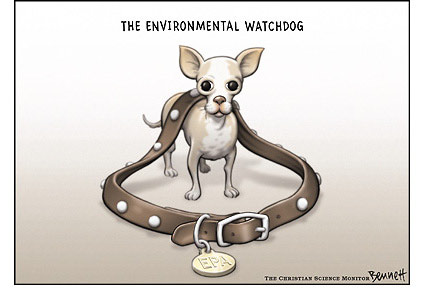
The U.S. Environmental Protection Agency, a group that has widely been criticized under the Bush administration for taking a lack luster approach (some might call it a pro-pollution) attitude when it comes to environmental protection. They are currently being sued by the state of California because the EPA won’t regulate CO2 emissions, something the Supreme Court has said they can. Even with that half assed approach to environmental enforcement the EPA enforcement program achieved results to protect the nation’s air, water, and land in fiscal year 2007. Industries, government agencies and other regulated entities agreed to spend a record $10.6 billion in pollution controls and environmental projects, exceeding the previous record of $10.2 billion set in 2005.
Since 2003, EPA’s enforcement activities have required companies to invest over $33 billion in pollution control equipment to achieve pollution reductions of nearly 4.5 billion pounds. In FY 2007, EPA’s civil and criminal enforcement actions produced commitments to reduce pollutants by 890 million pounds. Nearly 70 percent of these reductions were achieved by addressing high-priority air and water pollution challenges. Air priority efforts achieved commitments to reduce 427 million pounds of pollutants, while water priority efforts achieved commitments to reduce 178 million pounds. (note these are commitments, not actual reductions.)
Enforcement actions taken in FY 2007 will still produce health benefits. EPA’s 12 largest stationary source air enforcement cases will result in reducing over 500 million pounds of harmful air pollutants, with annual human health benefits estimated at $3.8 billion. These health benefits include reducing approximately 500 premature deaths in people with heart or lung disease, 50,000 fewer days of missed work or school, and 1,000 fewer hospital visits due to asthma and heart failure every year when fully implemented. These actions will reduce harmful air emissions of 308 million pounds of sulfur dioxide, 187 million pounds of nitrogen oxides, and 11 million pounds of particulate matter annually.
During storms, overflows from inadequate combined sewers and sanitary sewers can discharge untreated sewage and industrial wastewaters into rivers, lakes, oceans, and other waterways. Enforcement actions taken in FY 2007 led to investments of $3.6 billion in pollution controls to remove 45 million pounds of pollutants in discharges from overflows of combined sewers and sanitary sewers. These investments are more than three times greater than those obtained in 2006.
As a result of Superfund (a fund Bush let be defunded) enforcement and other remediation agreements, responsible parties agreed to invest $688 million last year to clean up contamination. The parties agreed to clean up a record-setting 79 million cubic yards of contaminated soil or enough to cover more than 12,000 football fields with three feet of dirt. In addition, polluters agreed to clean up 1.4 billion cubic yards of contaminated water, which is enough to fill more than 425,000 Olympic-size swimming pools.
In FY 2007, the criminal enforcement program opened 10 percent more environmental crimes cases than in 2006. Criminal fines and restitution also increased from the previous year by 46 percent, totaling $63 million. Defendants who pleaded guilty or were found guilty of environmental crimes were ordered by courts to spend $135 million on environmental projects, an increase of 350 percent.
Just imagine what they could do with the proper budget, and an administration ready to make serious changes.